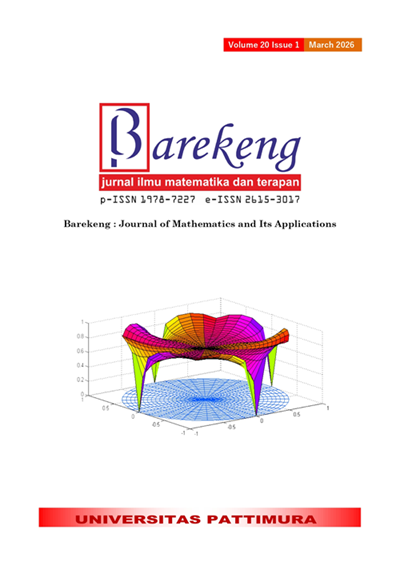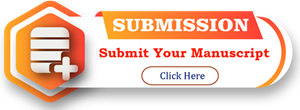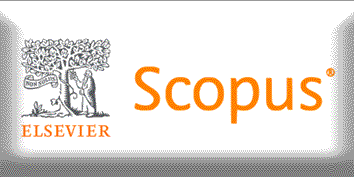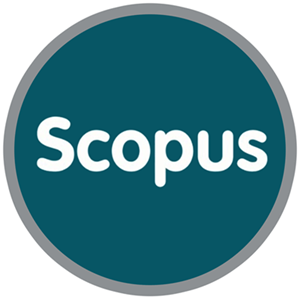COMPARISON OF CLUSTERING EARTHQUAKE PRONE AREA IN SUMATRA ISLAND USING K-MEANS AND SELF-ORGANIZING MAPS
Abstract
An earthquake is a sudden vibration on the earth's surface caused by the shifting of tectonic plates. One region in Indonesia that is particularly prone to earthquakes is Sumatra Island, due to its geographical location at the convergence of two tectonic plates, namely the Indo-Australian plate, which is actively subducting beneath the Eurasian plate. While earthquakes cannot be prevented or avoided, effective disaster mitigation strategies can help minimize the impact. The purpose of this research is to classify earthquake-prone areas on Sumatra Island based on depth and magnitude, allowing for further analysis to determine the characteristics of the clustering results. The study employs two clustering methods to analyze earthquake data from 1973 to 2024: the K-means and Self-Organizing Maps (SOM) algorithm. K-means algorithm is preferred for its simplicity and efficiency in handling large datasets, and suitability for numerical earthquake data analysis. Conversely, the SOM algorithm offers more stable clustering results and preserves the topological structure of the data, making it advantageous for exploring spatial patterns. The research findings indicate that the K-means algorithm provides better grouping, achieving a Silhouette Coefficient of 0.53, compared to 0.47 for the SOM algorithm. The K-means clustering resulted in two clusters: Cluster 1 contains 1,213 members and is characterized by shallow depths (3.9 km-41 km) and larger magnitudes (5 - 8.92 ), indicating a higher risk level. In contrast, Cluster 2 includes 412 members and represents areas with greater depths (40.8 km-70 km) and smaller magnitudes (5 - 6.85 ), corresponding to a lower risk level. This research aims to support the government in its earthquake disaster mitigation efforts, especially on Sumatra Island.
Downloads
References
B. A. P. Martadiputra, D. Rachmatin, and A. S. Hidayat, “ANALYSIS OF CHARACTERISTICS OF EARTHQUAKE AREA IN INDONESIA IN 2020 WITH CLUSTER ANALYSIS AS NATURAL DISASTER,” Int. J. Sci. Res., vol. 9, no. 11, pp. 1243–1250, 2021, doi: 10.21275/SR201122121148.
S. Al Faridzi et al., “PENGOLAHAN DATA: PEMAHAMAN GEMPA BUMI DI INDONESIA MELALUI PENDEKATAN DATA MINING,” J. Pengabdi. Kolaborasi dan Inov. IPTEKS, vol. 2, no. 1, pp. 262–270, 2024, doi: https://doi.org/10.59407/jpki2.v2i1.506.
W. Asnita, D. Sugiyanto, and I. Rusydy, “KAJIAN STATISTIK SEISMISITAS KAWASAN SUMATERA,” J. Nat., vol. 16, no. 2, pp. 5–9, 2016, doi: https://doi.org/10.24815/jn.v16i2.4917.
I. H. Rifa, H. Pratiwi, and Respatiwulan, “IMPLEMENTASI ALGORITMA CLARA UNTUK DATA GEMPA BUMI DI INDONESIA,” Semin. Nas. Penelit. Pendidik. Mat. UMT, pp. 161–166, 2019.
P.-N. Tan, M. Steinbach, A. Karpatne, and V. Kumar, INTRODUCTION TO DATA MINING, SECOND EDITION. New York: Pearson Education, Inc., 2019.
J. Han, J. Pei, and H. Tong, DATA MINING: CONCEPTS AND TECHNIQUES, FOURTH EDITION. Elsevier Inc., 2022.
E. Zacchei and R. Brasil, “K‑MEANS FOR EARTHQUAKES: DISAGGREGATION ANALYSES OF SMALL EVENTS BY CONSIDERING WAVE COMPONENTS AND SOIL TYPES,” Arab. J. Geosci., vol. 17, no. 302, 2024, doi: https://doi.org/10.1007/s12517-024-12113-0.
A. A. Khan, M. S. Bashir, A. Batool, M. S. Raza, and M. A. Bashir, “K-MEANS CENTROIDS INITIALIZATION BASED ON DIFFERENTIATION BETWEEN INSTANCES ATTRIBUTES,” Int. J. Intell. Syst., 2024, doi: https://doi.org/10.1155/2024/7086878.
S. Ariani, M. Nusrang, and M. K. Aidid, “APPLICATION OF CLUSTER ANALYSIS OF SELF ORGANIZING MAP (SOM) METHOD IN THE COMMUNITY LITERACY DEVELOPMENT INDEX IN INDONESIA,” J. Appl. Sci. Eng. Technol. Educ., vol. 6, no. 1, pp. 56–62, 2024, doi: https://doi.org/10.35877/454RI.asci1571.
T. Kotsiopoulos, P. Sarigiannidis, D. Ioannidis, and D. Tzovaras, “MACHINE LEARNING AND DEEP LEARNING IN SMART MANUFACTURING: THE SMART GRID PARADIGM,” Comput. Sci. Rev., vol. 40, no. 100341, 2021, doi: https://doi.org/10.1016/j.cosrev.2020.100341.
P. Novianti, D. Setyorini, and U. Rafflesia, “K-MEANS CLUSTER ANALYSIS IN EARTHQUAKE EPICENTER CLUSTERING,” Int. J. Adv. Intell. Informatics, vol. 3, no. 2, pp. 81–89, 2017, doi: https://doi.org/10.26555/ijain.v3i2.100
F. Reviantika, C. N. Harahap, and Y. Azhar, “ANALISIS GEMPA BUMI PADA PULAU JAWA MENGGUNAKAN CLUSTERING ALGORITMA K-MEANS,” J. Din. Inform., vol. 9, no. 1, pp. 51–60, 2020.
N. Dwitiyanti, S. Ayu Kumala, and S. Dwi Handayani, “PENERAPAN METODE K-MEANS PADA KLASTERISASI WILAYAH RAWAN GEMPA DI INDONESIA IMPLEMENTATION OF K-MEANS METHOD IN CLASSTERIZATION OF EARTHQUAKE PRONE AREAS IN INDONESIA,” Pros. Semin. Nas. UNIMUS, vol. 6, pp. 1029–1037, 2023.
B. S. Febriani and R. F. Hakim, “ANALISIS CLUSTERING GEMPA BUMI SELAMA SATU BULAN TERAKHIR DENGAN MENGGUNAKAN ALGORITMA SELF-ORGANIZING MAPS (SOMS) KOHONEN,” Pros. Semin. Nas. Mat. dan Pendidik. Mat. UMS, pp. 715–722, 2015.
T. Ariawan and Supatman, “KLASTERISASI GEMPA BUMI DI PESISIR SELATAN JAWA DAN LAMPUNG MENGGUNAKAN ALGORITMA SELF-ORGANIZING MAPS ( SOM ) KOHONEN,” no. November, pp. 171–177, 2019.
R. Nainggolan, R. Perangin-angin, E. Simarmata, and F. A. Tarigan, “IMPROVED THE PERFORMANCE OF THE K-MEANS CLUSTER USING THE SUM OF SQUARED ERROR (SSE) OPTIMIZED BY USING THE ELBOW METHOD,” J. Phys. Conf. Ser., vol. 1361, no. 012015, 2019, doi: https://doi.org/10.1088/1742-6596/1361/1/012015.
H. Zhao, “DESIGN AND IMPLEMENTATION OF AN IMPROVED K-MEANS CLUSTERING ALGORITHM,” Mob. Inf. Syst., 2022, doi: https://doi.org/10.1155/2022/6041484.
F. H. Awad, “IMPROVED K-MEANS CLUSTERING ALGORITHM FOR BIG DATA BASED ON DISTRIBUTED SMARTPHONE NEURAL ENGINE PROCESSOR,” Electronics, vol. 11, no. 883, 2022, doi: https://doi.org/10.3390/electronics11060883.
T. Ahmad and H. Chen, “A REVIEW ON MACHINE LEARNING FORECASTING GROWTH TRENDS AND THEIR REAL-TIME APPLICATIONS IN DIFFERENT ENERGY SYSTEMS,” Sustain. Cities Soc., 2019, doi: https://doi.org/10.1016/j.scs.2019.102010.
A. Jamil, A. A. Hameed, and Z. Orman, “A FASTER DYNAMIC CONVERGENCY APPROACH FOR SELF-ORGANIZING MAPS,” Complex Intell. Syst., vol. 9, no. 1, pp. 677–696, 2023, doi: https://doi.org/10.1007/s40747-022-00826-2.
S. Licen, A. Astel, and S. Tsakovski, “SELF-ORGANIZING MAP ALGORITHM FOR ASSESSING SPATIAL AND TEMPORAL PATTERNS OF POLLUTANTS IN ENVIRONMENTAL COMPARTMENTS: A REVIEW,” Sci. Total Environ., vol. 878, no. March, p. 163084, 2023, doi: https://doi.org/10.1016/j.scitotenv.2023.163084.
M. Scholz, “WETLANDS FOR WATER POLLUTION CONTROL (SECOND EDITION),” in Wetlands for Water Pollution Control, Elsevier Inc, 2016, pp. 239–257.doi: https://doi.org/10.1016/B978-0-444-63607-2.00026-5
D. Miljković, “BRIEF REVIEW OF SELF-ORGANIZING MAPS,” in MIPRO, 2017, pp. 1252–1257, doi: https://doi.org/10.23919/MIPRO.2017.7973581.
M. Shutaywi and N. N. Kachouie, “SILHOUETTE ANALYSIS FOR PERFORMANCE EVALUATION IN MACHINE LEARNING WITH APPLICATIONS TO CLUSTERING,” Entropy, vol. 23, no. 6, p. 759, 2021, doi: https://doi.org/10.3390/e23060759.
F. Majidi, “A HYBRID SOM AND K-MEANS MODEL FOR TIME SERIES ENERGY CONSUMPTION CLUSTERING,” 2023, doi: https://doi.org/10.48550/arXiv.2312.11475.
E. J. Ramos, A. D., Lopez-Rubio, E., and Palomo, “THE ROLE OF THE LATTICE DIMENSIONALITY IN THE SELF-ORGANIZING MAP,” Neural Netw. World, vol. 1, pp. 57–85, 2018.doi: https://doi.org/10.14311/NNW.2018.28.004
S. W. Ullah, A., Haydarov, K., Ul Haq, I., Muhammad, K., Rho, S., Lee, M., and Baik, “DEEP LEARNING ASSISTED BUILDINGS ENERGY CONSUMPTION PROFILING USING SMART METER DATA,” Sensors, vol. 20, no. 3, p. 873, 2020.doi: https://doi.org/10.3390/s20030873
Badan Meteorologi Klimatologi dan Geofisika, KATALOG GEMPABUMI SIGNIFIKAN & MERUSAK TAHUN 1821-2023. Pusat Gempabumi dan Tsunami, 2024.
Copyright (c) 2025 Faradilla Ardiyani, Winita Sulandari, Yuliana Susanti

This work is licensed under a Creative Commons Attribution-ShareAlike 4.0 International License.
Authors who publish with this Journal agree to the following terms:
- Author retain copyright and grant the journal right of first publication with the work simultaneously licensed under a creative commons attribution license that allow others to share the work within an acknowledgement of the work’s authorship and initial publication of this journal.
- Authors are able to enter into separate, additional contractual arrangement for the non-exclusive distribution of the journal’s published version of the work (e.g. acknowledgement of its initial publication in this journal).
- Authors are permitted and encouraged to post their work online (e.g. in institutional repositories or on their websites) prior to and during the submission process, as it can lead to productive exchanges, as well as earlier and greater citation of published works.






1.gif)



